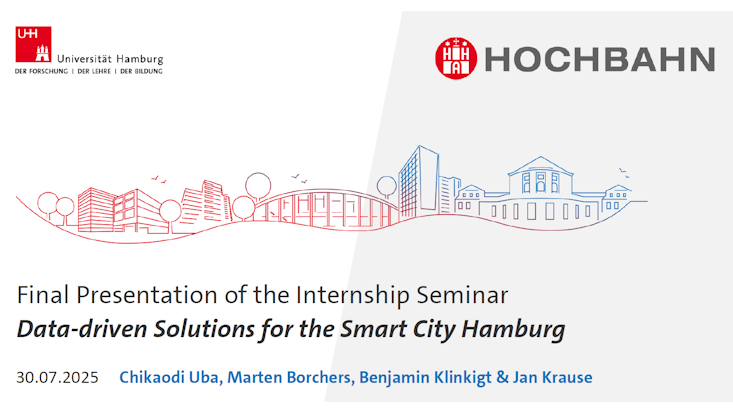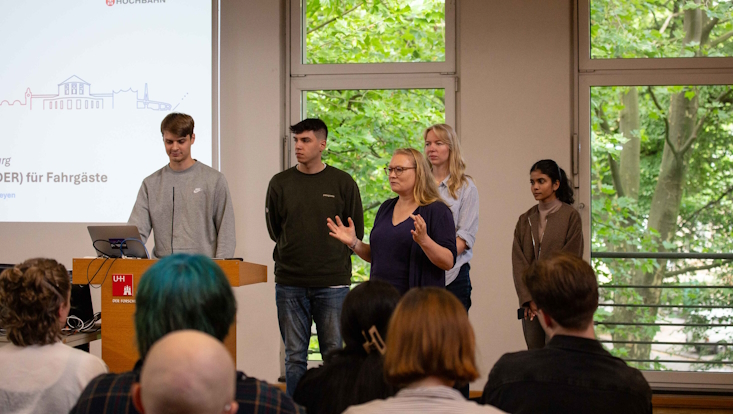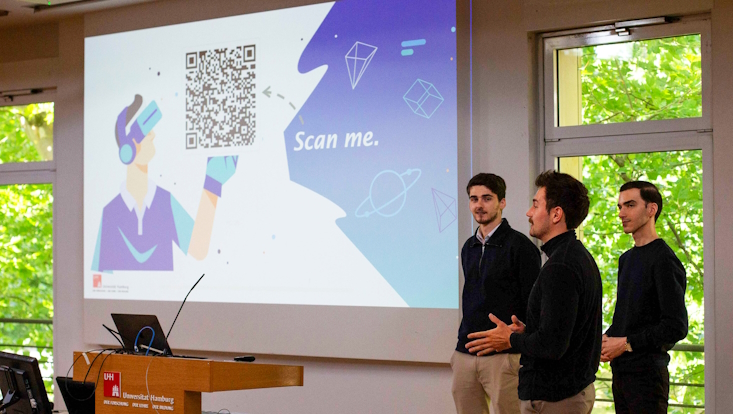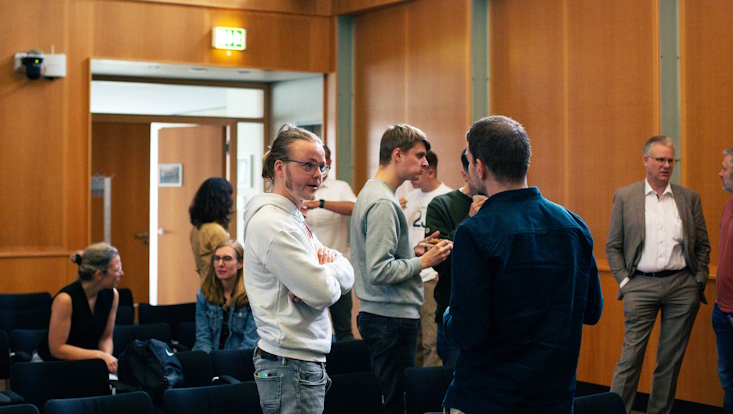Final presentation of the teaching project Data-driven Solutions for the Smart City Hamburg
31 July 2025, by Marten Borchers

Photo: UHH
On July 30, the closing event of the Data-driven Solutions for the Smart City Hamburg teaching format took place at the University of Hamburg, which we conduct in collaboration with the Hamburger Hochbahn AG.
The teaching format aims to enable students to work on practical use cases in order to promote innovation and skills. To this end, the course collaborated with the hvv Information Media department, represented by Anja Schneider and Philipp Holz, the Sustainability department, represented by Daniel Schulz, the Mobility Strategy and Strategic Product Planning department, represented by Aurelia Mennerich, and the Citizen Participation department, represented by Doreen Röhle.
The group of students, consisting of Wiebke Freitag, Aarushi Borkar, Marco Daum, and Hauke Heyen (+1), worked with Anja Schneider and Philipp Holz to investigate how digital level routing could be used to support navigation in complex and straightforward rapid transit stations for citizens. The prototype maps this using an interactive map based on OpenStreetMap and integrates the Geofox database and other sources and technologies. Citizens can thus view routes in advance and navigate step-by-step through transfers involving level changes.
Julian Dillmann, Julian Klass, and five further students have investigated with Daniel Schulz how large language models based on retrieval-augmented generation architecture can support the performance of essence analyses. Materiality analyses are carried out for the preparation of sustainability reports, in which a wide variety of positions and perspectives must be taken into account. The prototype developed for this purpose accesses a wide variety of reports and documents in order to specifically support the performance of materiality analyses with content, text modules, and diverse perspectives within the framework of a chatbot interaction.
The group consisting of Lucina Woldeab, Gaurika Chopra, Tobias Staudinger, and Henrik Wallenhorst (+3), together with Aurelia Mennerich and Doreen Röhle, investigated how passenger information for deaf and hearing-impaired people can be prepared and communicated in real time in an understandable way. To this end, a pictogram-based solution was developed that depicts the cases of closure, track change, delay, emergency (evacuation), and rail replacement service. To translate event information from HOCHBAHN's Geofox database, the students developed an AI-based translation using an LLM and integrated it into a web prototype. The prototype was then initially evaluated and discussed with the target group, and its potential and challenges were identified.
Chikaodi Uba, Jan Krause, Benjamin Klinkigt, Eva Bittner, and I are delighted with the successful completion of the teaching format, the prototypes developed, and the discussions.
Many thanks to all the students, without whom this would not have been possible, and to Hamburger Hochbahn AG. We look forward to further cooperation and support, to shaping learning and teaching with real-world challenges, and at the same time to providing impetus for the mobility of tomorrow.
 |
 |
 |
 |
